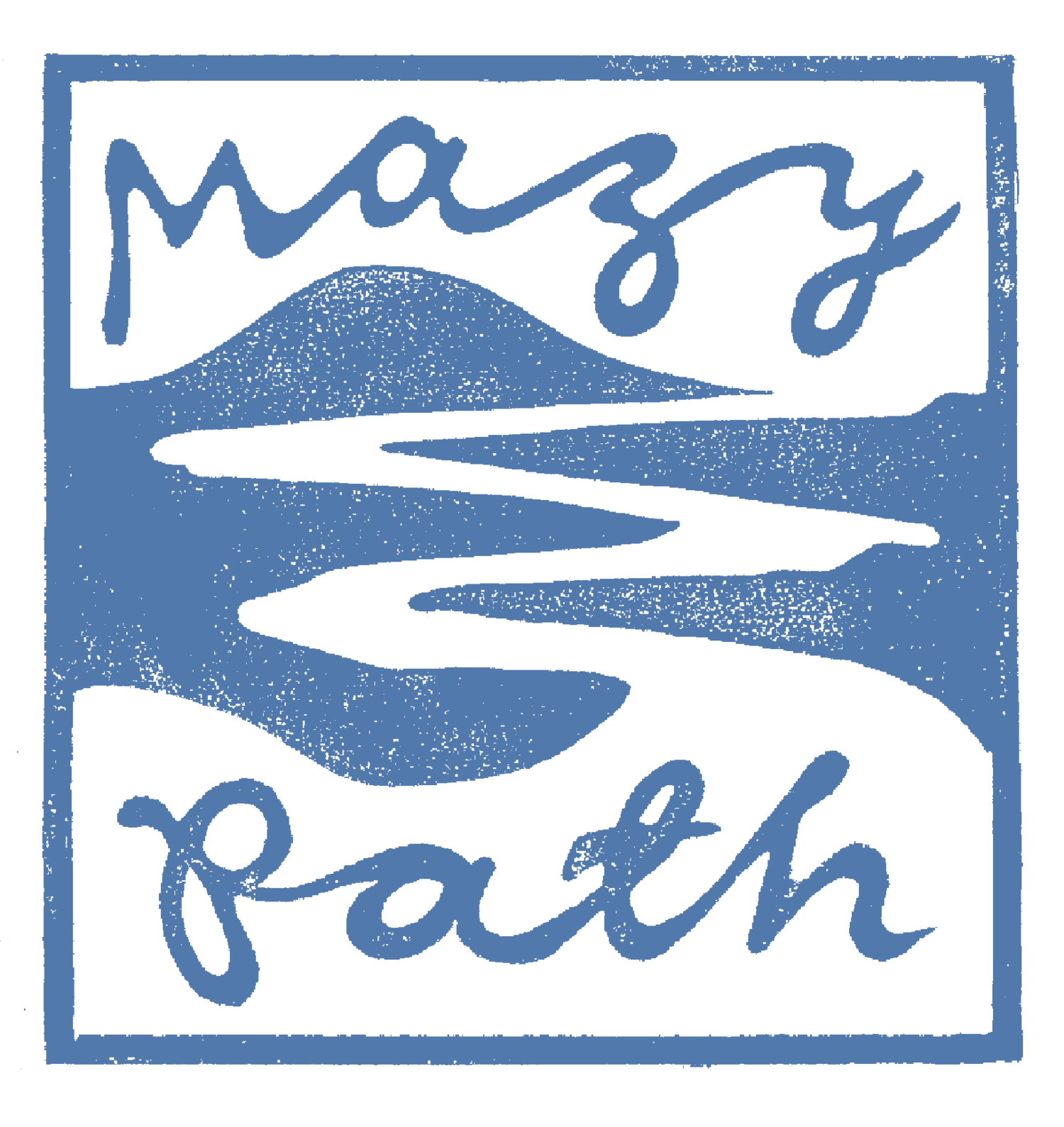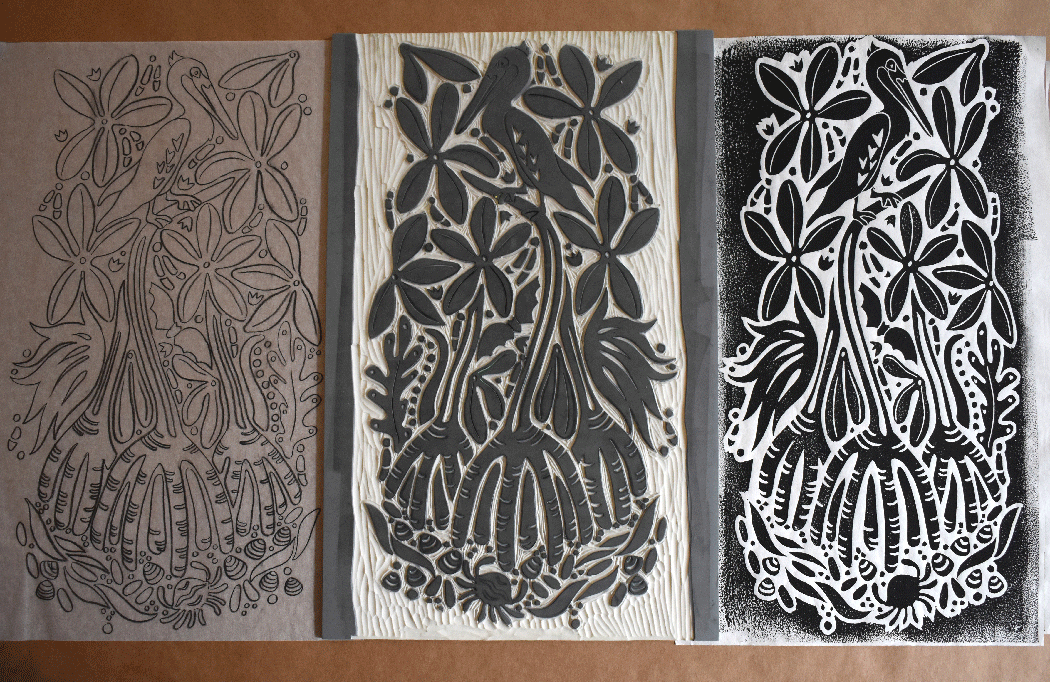Making Mangrove
Mangrove, Color Leaf Green. Photo by Alexandra Rowley.
People often ask me about my creative process. I like to answer that question by telling the story of a particular design. So, let’s talk about Mangrove. The development of this pattern illustrates how I approach my work.
Inspiration for Mangrove’s motifs and layout. Images of Ludwig Heinrich Jungnickel’s work, including his frieze “Animal Paradise”, can be seen in the remarkable book Art for All: Colour Woodcut in Vienna Around 1900.
I start with research. When I was looking for unusual trees to inspire our second collection, Treasure Tree, I came across the red mangrove. After reading about the tree’s unique appearance and importance to Florida's coastal ecosystems, I gathered images of red mangroves and the many animals for whom they provide habitat. The more I learned about these treasure trees, from their beauty to their hurricane resilience, the more smitten I became.
The symbiotic relationship that red mangroves have with the creatures that inhabit them made me think of works by the Wiener Werkstätte artist, Ludwig Heinrich Jungnickel. Known for his friezes, Jungnickel created designs with motifs that fit together like jigsaw puzzle pieces. As I studied Jungnickel’s work “Animal Paradise,” I began to see how I might represent the world of the red mangrove in a repeating pattern.
Using photos of red mangrove forests and the animals and plants that live in their midst for inspiration, I created six densely illustrated sketches to represent the Red Mangrove’s vital and interdependent world. I designed these six images to lock together and create a repeating pattern.
Moving from sketch to block to print.
I drew with soft 6B charcoal pencils so that when I put my sketches face down on rubberized blocks and applied pressure, the images would transfer easily. Next I carved the blocks using a variety of different gouges to achieve line quality variation. Then, using a roller, I applied water-based ink onto the blocks. The last step was to place rice paper on top of the blocks and use my hands to create the prints.
Sketches, carved blocks, prints, and color inspiration.
Once I had created the six relief prints that make up Mangrove’s composition, I developed colorways. Color inspiration came from a variety of sources, including prints by textile giants Josef Frank and William Morris. For this design, I added color in the post-production process.
Mangrove is available in colors Leaf Green and Ocean
The next step was to send my prints and color work to the mill in Connecticut that manufactures my wallpapers. They scanned my prints and integrated color per my direction. This process involved multiple trials to get the color just right and yielded two colorways: Leaf Green and Ocean. With final approvals in hand, the mill printed Mangrove on clay coated paper, shipped samples to our showroom partners, and stood by for orders!
Now, from the Palm Beach atelier of Mally Skok to the studio of Source Honolulu, Mangrove is out into the world. And the moment when my creative process ends and someone else's begins is surely one of the sweetest parts of the whole cycle. What a delight to see what designers are making of Mangrove!






